
The resulting clinker (rounded nodules between 1mm and 25mm across) is ground to a fine powder in a cement mill and mixed with gypsum to create cement. The powdered cement is then mixed with water and aggregates to form concrete that is used in construction. Clinker quality depends on raw material composition.
WhatsApp: +86 18838072829
Monitoring of Sulphate content and mineralogical composition type (linked to dehydration during grinding) are crucial for achieving the right fresh and hardened cement properties. Regarding blended cement, closely controlling composition (including amorphous materials) is required to meet clients' specifications and CO 2 emissions targets ...
WhatsApp: +86 18838072829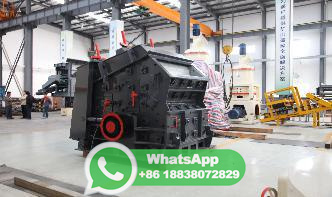
zation and storage of cement raw meal, where the material is extracted simultaneously at different flow rates from a number of outlets in the silo bottom. The CF system, including suitable kiln feed equipment, ensures stable kiln feed composition at minimum power consumption and investment cost. The efficient performance of the CF
WhatsApp: +86 18838072829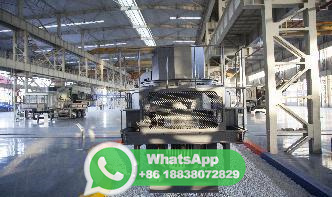
The desired target for the free lime content in the cement clinker is % % [10] or below 2% [12]. Lower values of free lime indicates an overburn, consuming more energy both in the clinker ...
WhatsApp: +86 18838072829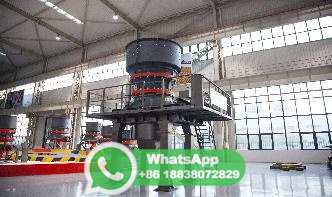
Vertical raw mill is one kind of raw mill, generally used to grind bulk, granular, and powder raw materials into required cement raw meal in the cement manufacturing raw mill is an ideal grinding mill that crushing, drying, grinding, grading transfer set in one. It can be widely used in cement, electric power, metallurgy, chemical industry, nonmetallic ore, and other industries.
WhatsApp: +86 18838072829
Cement industry is estimated to account for ~67% of anthropogenic CO2 emissions globally. Therefore, the identification of innovative solutions for their mitigation is both a priority and a challenge. The integration of carbon capture and storage technologies into the industrial production process is considered among the most viable solutions for this purpose, and calcium looping (CaL ...
WhatsApp: +86 18838072829
The proportioning is based on the chemical analyses of the raw mill feed and the produced raw meal [2], [3]. For the evaluation of the clinker quality as well as the raw meal composition, the main oxides are translated into the so called moduli, which provide more meaningful values than the single oxides alone.
WhatsApp: +86 18838072829
The crusher is fed with specific raw material proportions calculated from material's mineral composition by the laboratory. Raw meal ratios are introduced to simplify the control of the chemical composition during raw meal grinding and clinker production. Most important ratios are lime saturation factor, silica ratio and alumina ratio [26 ...
WhatsApp: +86 18838072829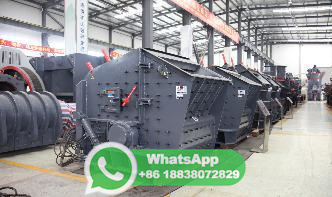
4. Sampling inside mill (mill test) Sampling of material. Take ~1 kg sample every 1 m along mill axis. Each sample collected from 3 point in the same cross section. Removed some balls and taken sample. First and last sample in each compartment should be taken. from m off the wall or diaphragms. 4.
WhatsApp: +86 18838072829
The robust control of cement composition safeguards key cement performance characteristics such as strength. Such control begins at the quarry and extends ... coming out of the raw mill" compared to prior to installation. Quality Control Manager at US cement manufacturer 80 85 90 95 100 105 110 115 #!!
WhatsApp: +86 18838072829
A review of recent raw mill designs indicates that increasing the maximum design raw material moisture from 4% to 17% would result in a doubling of the installed fan capacity. The separator size ...
WhatsApp: +86 18838072829
[2] Bentz, Garboczi, Haecker, and Jensen (1999), "Effects of Cement Particle Size Distribution on Performance Properties of Portland CementBased Materials", Cement and Concrete Research, 29 ...
WhatsApp: +86 18838072829
Cement manufacturing process is now operated with the aid of various control systems, such as raw meal composition control, kiln control and mill control. ... Ball mill control Automatic startup control In most cement plants, start up of a mill is conducted through a series of manual operations on the part of an operator. The operator ...
WhatsApp: +86 18838072829
Vertical roller mill for cement grinding [13]. VRM shown in Figure1 uses hydraulically hardpressed conical shape 24 rollers against the horizontal ... Product transport volume Grinding aid injection Composition of raw material Temperature after the mill Hot gas Grinding roller wear Mill vibrations Fresh air Figure2. VRM control ...
WhatsApp: +86 18838072829
In the surveyed cement plant, three balances are established between input and output material in the raw mill, clinker production, and cement grinding system. t, t, and t of materials are required to produce a ton of the product in raw material preparation, clinker production, and cement grinding stages; waste gases account for ...
WhatsApp: +86 18838072829
The exact composition of the raw materials and the manufacturing process can vary depending on the type of cement being produced, such as Portland cement, white cement, or blended cements.
WhatsApp: +86 18838072829
Distribution of dust emissions at bag filters in the cement mill section (mill filterpoint A and separator filterpoint B, Figure 1) of the analyzed cement plant.
WhatsApp: +86 18838072829
In the present study, Portland type cement was prepared in laboratoryscale by Greek Wet Fly Ash and Mill Scales, as well as conventional raw materials such as limestone, shale and lava. The experiments were conducted at 1450 °C and 1340 °C. ... CementPart 1: Composition, Specifications and Conformity Criteria for Common Cements. European ...
WhatsApp: +86 18838072829
with common raw materials for cement production. 3. To mix the raw materials in a proper way two prerequisites have to be fulfilled: • First of all, the chemical composition of each raw material must be known. • The chemical composition of the raw material should be constant or the variations have to be
WhatsApp: +86 18838072829
Cement composition will vary from plant to plant depending on the quality of the limestone in that specific quarry and the availability of additives in that area. These additives, along with the limestone, are fed from bins to the raw mill. An extremely important step in the cement process is to proportionally feed these materials to the raw ...
WhatsApp: +86 18838072829
P. Raw mill weigh hopper 25 Q. Raw mill air seperator 26 R. Finish grinding mill feed belt 27 S. Finish grinding mill weight hopper 28 T. Finish grinding mill air seperator 29 U. Preheater kiln V. Preheater/Precalciner kiln The second step in portland cement manufacture is preparing the raw mix, or kiln feed, for the
WhatsApp: +86 18838072829
The main raw materials required for manufacturing clinker and cement are Limestone, Clay and Laterite. All the raw materials are stored in respective hoppers and underneath the weight feeders are installed to make the mix proportion. 90 95% of Limestone, 2 5% of Clay and 3 5% Laterite
WhatsApp: +86 18838072829
Raw Mix Proportioning and Raw Mix Design of cement. The raw materials mixture is called raw mix or raw meal or kiln feed, The continuous production of highquality cement is possible only if the raw mix possesses optimum composition, The purpose of calculating the composition of the raw mix is to determine the quantitative proportions of the components of the raw materials to give clinker the ...
WhatsApp: +86 18838072829
Dry process, in which the raw materials are fed in ratios necessary to achieve the desired chemical composition to either a rotating ball mill or vertical spindle (roller) mill. The raw materials are dried with waste process gases taken from the kiln system. The target grind is the bulk of the product is less than 75 μm. The mill product or ...
WhatsApp: +86 18838072829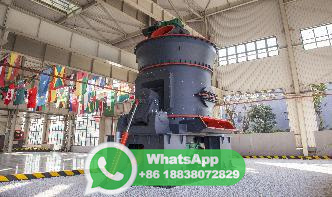
About 2% of the electricity produced in the whole world is used during the grinding process of raw materials [1]. While total electrical energy consumption for cement production is about 100 kWh/ton of cement, roughly two thirds are used for particle size reduction [2]. About 65% of the total electrical energy used in a cement plant is utilized ...
WhatsApp: +86 18838072829
Extraction and processing Raw materials employed in the manufacture of cement are extracted by quarrying in the case of hard rocks such as limestones, slates, and some shales, with the aid of blasting when necessary. Some deposits are mined by underground methods. Softer rocks such as chalk and clay can be dug directly by excavators.
WhatsApp: +86 18838072829
Considering the mismatch of the developed model, an adaptive composition control strategy of the cement raw mill guaranteeing a robust operation was handled by Vajk et al. [6]. Also, to cope with the strong noise of the process data, a time varying Kalman filter, whose outputs are the optimal estimations of the concentrations, was developed by ...
WhatsApp: +86 18838072829
The analysis of raw materials composition at the mill input is not feasible because it requires an expensive and time Blending Quality Control consuming procedure. 80 we propose: 1) to estimate the composition of the input raw materials from mill output measurements. 2) to predict this composition b y means of the beds raw materials model.
WhatsApp: +86 18838072829
Cements may be used alone (, "neat," as grouting materials), but the normal use is in mortar and concrete in which the cement is mixed with inert material known as is cement mixed with sand or crushed stone that must be less than approximately 5 mm ( inch) in size. Concrete is a mixture of cement, sand or other fine aggregate, and a coarse aggregate that for most ...
WhatsApp: +86 18838072829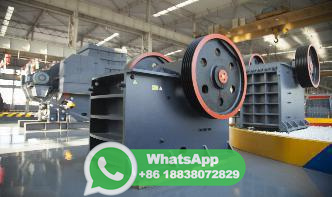
In the whole process of cement production, the electricity consumption of a raw material mill accounts for about 24% of the total. Based on the statistics of the electricity consumption of the raw material mill system of 1005 production lines in China between 2014 and 2019, it is found that the average electricity consumption of the raw material preparation process of all clinker production ...
WhatsApp: +86 18838072829
then fed together into a mill where the rock is ground until more than 85% of the material is less than 90µm in ... Chemical Composition of Portland Cement The raw materials used for the manufacture of cement consist mainly of lime, silica, alumina and iron oxide. These
WhatsApp: +86 18838072829
Table 5: Simulation results for the Mass balance of the local raw mill Mass Balance of Raw mill Input Output Material Unit Plant data Simulation Material Unit Plant data Simulation Raw feed kg/h 240000 240000 Raw meal kg/h 235300 231977 Moisture in raw feed kg/h 48000 48000 Gas kg/h 555260 558487 Hot gas from kiln kg/h 477086 477086 moisture kg ...
WhatsApp: +86 18838072829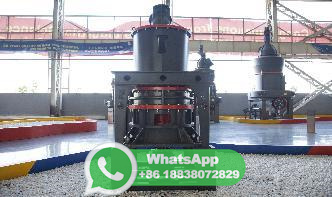
The composition and shape of the raw meal may vary according to different cement production methods. For example, in the dry process of cement production, the raw meal is ground into powders, while in other cement production methods, slurry, spherical, and massive raw meals are also commonly seen.
WhatsApp: +86 18838072829
According to Indonesian Standard SNI, Portland Composite Cement (PCC) or blended cement is defined as a hydraulic binder which consists of clinker, gypsum and one or more inorganic materials where their contents range from 6% to 35% of the total mass of PCC. However, some factories still have their clinker levels in PCC above 80%.
WhatsApp: +86 18838072829
The second important raw material for cement production is main component of clay is formed by hydrous aluminium chemical composition of clay may vary from those close to the pure clay, to that containing a significant amount of admixtures as iron hydroxide, iron sulfide, sand, calcium carbonate, etc. Clay is used as an ar...
WhatsApp: +86 18838072829